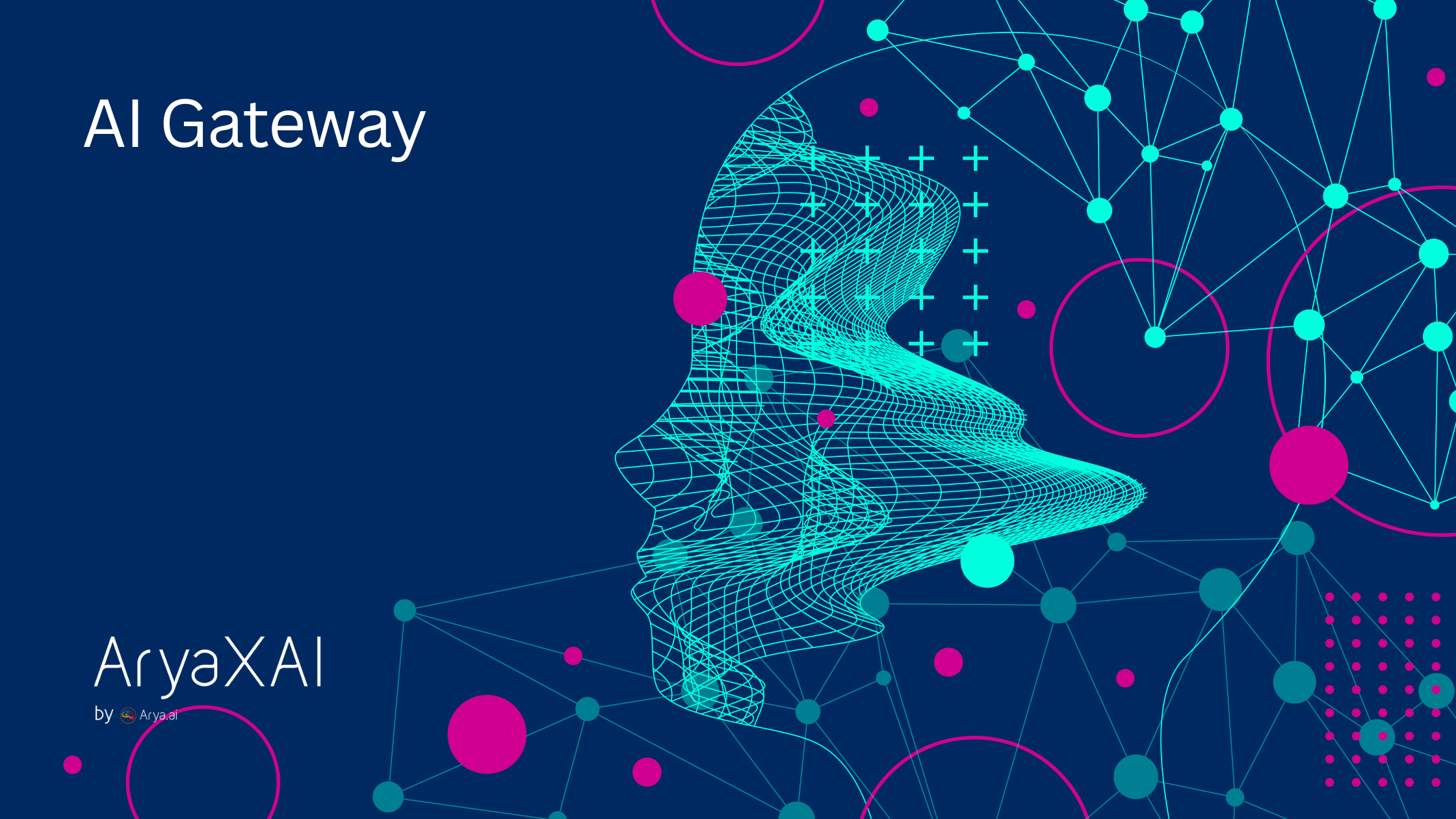What is AI Governance? A Guide to Responsible and Ethical AI
5 minutes
February 11, 2025

The Growing Global Focus on AI Governance
AI governance is taking center stage at the Paris AI Summit, where India and France are deepening and suggesting bilateral cooperation on AI governance policy and responsible AI development. With rapid advancements in the capabilities of artificial intelligence and given its mission-critical use cases, a robust AI governance framework is essential to ensure that AI systems are developed, deployed, and utilized responsibly and ethically. As AI technologies take center stage in decision-making, knowing and implementing governance frameworks geared towards risk considerations of bias, privacy violations, AI model transparency, and ethical AI dilemmas is critical. Unchecked AI systems exacerbate social inequality, compromise individual privacy, and cause harm unintentionally.
In this blog, we explore what AI governance entails, its significance, and how organizations can develop effective frameworks to align AI with ethical and regulatory standards.
What is AI Governance and why does it matter?
AI governance is defined as the policies, compliance procedures, ethical standards, and accountability structures that inform the development, deployment, and lifecycle management of AI systems.
A clearly articulated AI governance framework ensures that artificial intelligence technologies are aligned with societal values, facilitate regulatory compliance, and mitigate risks of algorithmic bias, AI ethics, and model opacity. It places safety, fairness, transparency, and responsible AI decision-making paramount in both public and enterprise settings.
Some critical reasons that highlight the significance of AI governance:
- Ethical Responsibility: AI systems usually train on biased or unbalanced data, which can reinforce systemic inequalities. In the absence of an ethical AI governance structure, these technologies can generate discriminatory results, influencing areas such as hiring, criminal justice, credit scoring, and healthcare access. A governance model with a systematic approach anticipates these risks and integrates ethical management and bias-mitigation mechanisms through the AI development life cycle.
- Regulatory Compliance: The international regulatory environment is fiercely changing. Regulations such as the EU AI Act, GDPR, and soon-to-be-established AI regulatory regimes in the U.S., Australia, and Asia necessitate firm observation of AI compliance requirements, especially data usage, privacy, and algorithmic transparency. Enterprise AI governance policies deployed by organizations keep them ahead of regulation, mitigate legal risk, and protect them from penalties due to non-compliance.
- Public Trust: It is imperative to establish public trust in AI systems for mass adoption. With transparent AI governance, businesses can show that their AI technology is explainable, ethical, and responsible. Making AI outputs understandable and interpretable, and mapping them into public values, builds credibility, especially in high-stakes AI deployments
Key Challenges in AI Governance
Even with its growing significance, the implementation of AI governance is confronted with various technical, regulatory, and organizational issues, particularly while addressing enterprise AI compliance, ethical management, and AI risk management at scale.
Complexity of AI Systems and Transparency Shortfalls: Modern AI models, such as deep neural networks and large language models, are essentially black-box systems. Their black-box nature presents significant challenges to AI explainability, transparency in AI systems, and accountability. Enterprises cannot identify algorithmic bias, fairness abuses, or unforeseen ethical damages in the absence of insight into model interpretability. For instance, facial recognition technologies driven by AI have consistently exposed racial and gender biases, evoking intense scrutiny in AI ethics and compliance protocols for law enforcement and surveillance technology.
Rapid Technological Progression vs. Lag in Regulation: The pace of technological progress in generative AI, autonomous systems, and reinforcement learning models often outpaces the development of corresponding AI regulatory paradigms. Legacy policies also fail to account for new risks, resulting in regulatory blind spots. This deficit pushes policymakers to create forward-thinking, responsive AI governance initiatives that speak to present technologies without inhibiting innovation. Businesses that are rolling out the latest AI models need to embrace agile AI compliance frameworks to remain compliant with changing international mandates such as the EU AI Act, Biden's Executive Order on Safe AI, and other AI governance standards.
Divergent Stakeholder Interests in the AI Ecosystem: Forging an inclusive and efficient AI enterprise governance framework involves reconciling divergent goals of stakeholders—developers, compliance teams, regulators, and civil society. Developers seek performance and innovation; regulators focus on risk management and legal responsibility; users want AI data governance and transparency, while the general public desires guarantees of responsible AI use. Synchronizing these perspectives under one AI governance policy continues to be a nagging issue for international organizations.
Ethics and Societal Effects of AI Systems: Ill-managed AI applications can have long-term societal and ethical effects. For instance, AI algorithms in criminal justice can perpetuate systemic prejudice and, therefore, lead to disproportionate sentencing results. In healthcare, AI systems must ensure equal access to avoid aggravating disparities. Therefore, an effective ethical AI development life cycle is mandatory to ensure that AI solutions are non-discriminatory, inclusive, and based on social values and human rights. Organizations need to integrate ethics-by-design into their AI governance framework in order to avoid systemic harm.
How to Build an Effective AI Governance Framework: A Step-by-Step Guide
A well-structured AI governance framework is essential for organizations aiming to deploy artificial intelligence responsibly and compliantly. But how can you build one that aligns with ethical standards and global regulations? These steps outline the key components of a responsible AI governance strategy, helping enterprises establish robust controls, align with legal frameworks, and drive stakeholder trust in AI systems.
- What Are the Core Elements of an AI Governance Framework?
Core elements of the AI governance framework are a structured set of policies, guidelines, and accountability mechanisms that oversee the development, deployment, and monitoring of AI systems. Its purpose is to ensure ethical AI development, minimize risks, and comply with emerging AI regulatory frameworks such as the EU AI Act, GDPR, and national AI policies.
- Who Should Be Included in AI Governance Stakeholders?
Effective AI governance requires the inclusion of diverse stakeholders to create a comprehensive and ethical framework. This includes AI developers, data scientists, ethicists, sociologists, legal experts, and representatives from minority and marginalized communities. Engaging this broad spectrum ensures the governance framework addresses multiple perspectives, ethical concerns, and societal impacts, promoting inclusive AI governance and responsible AI development that aligns with global AI compliance standards.
- How Do You Monitor AI Systems for Risks?
Continuous monitoring of AI systems is essential for detecting biases, performance anomalies, and unintended consequences in real time. Implementing advanced AI monitoring tools provides transparency into decision-making processes, helping enterprises identify and resolve issues before they escalate. Regular AI system audits ensure ongoing compliance with AI governance frameworks, maintain ethical standards, and reinforce accountability. This proactive approach supports risk management in AI and fosters trust among stakeholders by ensuring AI models operate fairly, reliably, and transparently.
- Why Are Transparency and Explainability Crucial for Building Trust in AI?Transparency and explainability are foundational to fostering public trust and acceptance of AI models. When AI systems provide clear, understandable reasoning behind their decisions, both end-users and regulatory authorities are more likely to embrace their use. This is especially critical in high-stakes industries like healthcare, automobile, defense, law, and banking, where explainable AI helps mitigate risks by enabling stakeholders to scrutinize and validate AI-driven outcomes. Adopting transparent AI governance practices ensures accountability and supports compliance with ethical AI standards and regulatory requirements.
Recent Developments in AI Governance
1. Global Initiatives and Agreements on AI Governance
- Paris AI Summit 2025: The Paris AI Summit brings together world leaders to discuss AI governance, economic impacts, and ethical standards. Happening on February 2025, the summit is attended by prominent figures, including world leaders, top tech executives, and lawmakers.
- AI Seoul Summit 2024: The AI Seoul Summit took place in May 2024. It attracted leaders from 16 global AI tech companies, such as Tesla, Samsung Electronics, and OpenAI. The Seoul Declaration was issued. The declaration aims to ensure the safe, innovative, and inclusive development of AI technologies by ensuring international cooperation and human-centric AI principles.
- Bletchley Declaration: In November 2023, the AI Safety Summit at Bletchley Park in the UK resulted in the Bletchley Declaration, in which 28 countries, including the United States, China, and the European Union, agreed to collaborate on managing AI challenges and risks. This declaration underlines the importance of international co-operation in AI governance.
2. National Policies and Regulations
- United States: President Biden issued Executive Order 14110 in October 2023. This order focuses on the safe, secure, and trustworthy development of AI. The Executive Order calls on independent regulatory agencies to fully utilize their authority to protect consumers from risks associated with AI. It emphasizes the need for transparency and explainability, requiring AI models to be transparent and mandating that regulated entities can explain their AI usage.
- Australia: In September 2024, the Australian Government issued a Policy for the responsible use of AI in government, , marking a significant step toward positioning itself as a global leader in the safe and ethical use of AI. The policy underscores the need for AI to be used in an ethical, responsible, transparent, and explainable manner.
- China: China has aggressively incorporated AI into its governance structure. The country has policies that encourage AI development but keep a tight lid on information. For example, the AI chatbot DeepSeek self-censors in real time, showing the balance between technological advancement and governmental oversight.
3. Corporate Initiatives
- IBM and e& Collaboration: IBM has partnered with e& to introduce the first-ever end-to-end AI governance platform. This move advances AI governance frameworks and furthers compliance, oversight, and ethics in AI ecosystems.
- AryaXAI is another key player in AI governance, offering an advanced platform for AI alignment, risk management, and explainability. Designed for hmission-critical AI applications, it helps enterprises monitor model behavior, ensure transparency, detect and mitigate AI risks in real time, and align models with regulatory and ethical standards.
With AI governance taking center stage, tools like AryaXAI help organizations manage AI compliance and trust, ensuring responsible deployment of AI at scale.
Conclusion - AI Governance: The New Imperative
As AI continues to transform industries and societies, sound governance will be vital to ensure that these technologies are innovative and used responsibly. AI governance frameworks must take into account ethical issues, regulatory requirements, and societal effects while encouraging innovation. Through learning from successful implementations and actively tackling major challenges, organizations can develop AI systems that deliver societal benefits with reduced risks. Coordination among the policymakers, the companies, and the public is essential in deciding the governance frameworks that provide accountability and transparency towards AI technologies.
SHARE THIS
Discover More Articles
Explore a curated collection of in-depth articles covering the latest advancements, insights, and trends in AI, MLOps, governance, and more. Stay informed with expert analyses, thought leadership, and actionable knowledge to drive innovation in your field.

Is Explainability critical for your AI solutions?
Schedule a demo with our team to understand how AryaXAI can make your mission-critical 'AI' acceptable and aligned with all your stakeholders.



.png)
















.png)



